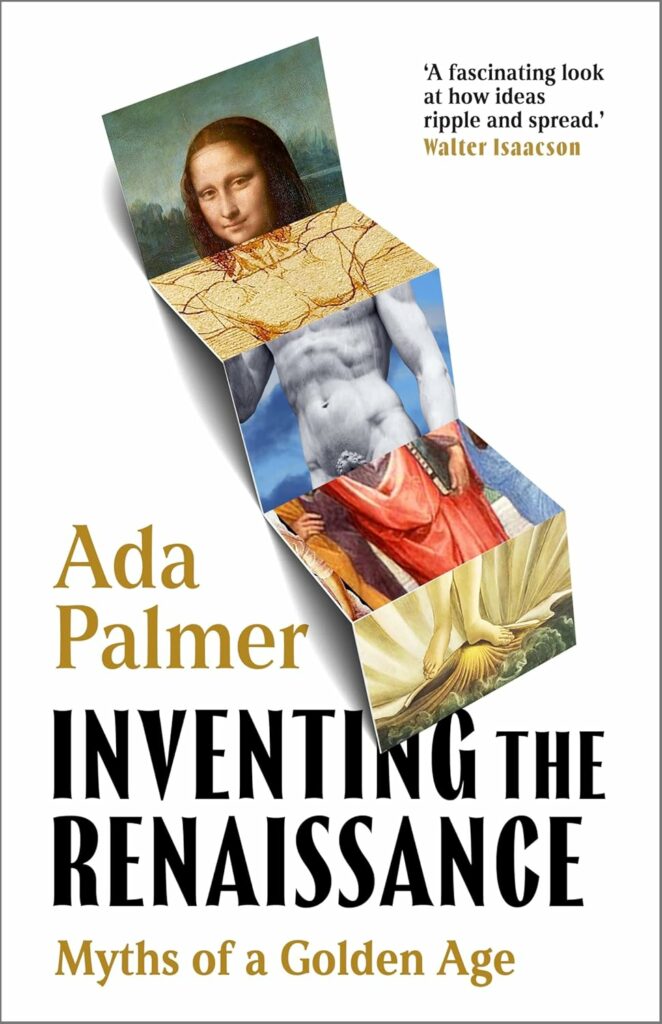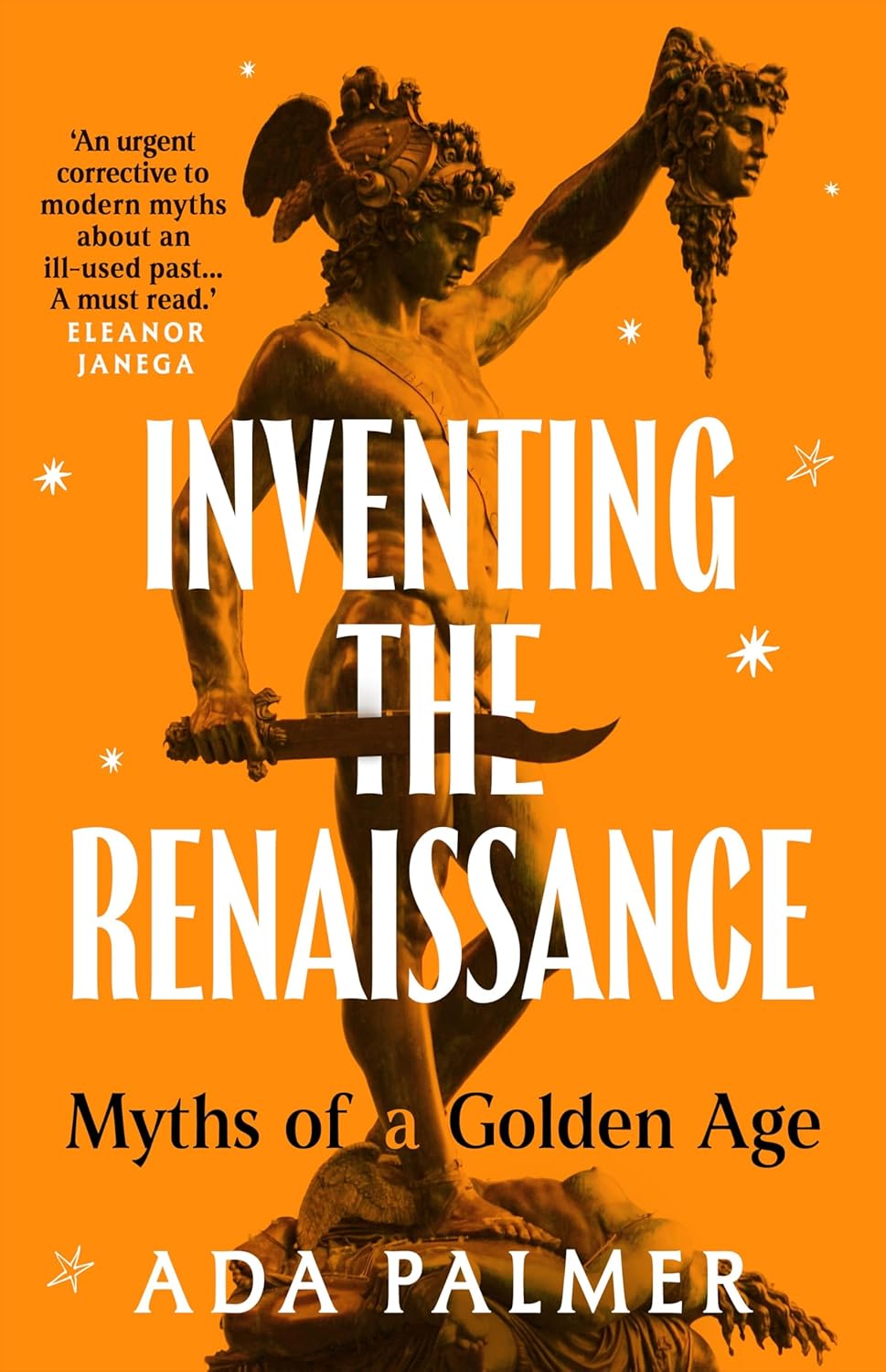Inventing the Renaissance
- Already out in the UK (order from Bookshop.uk, Blackwell’s, Amazon, Kobo, Kindle e-book or Audiobook; link coming Feb.)
- Coming March 21st in the USA (pre-order Bookshop.org, Barnes & Noble, Amazon, or for Nook, Kobo, or Kindle; US Audiobook order link coming soon). If you order directly from UCPress’s website you can get a 30% discount by using the coupon UCPNEW
- Or it’s always best to order from your favorite independent bookshop!
ABOUT THE BOOK:
The Renaissance is one of the most studied and celebrated eras of history. Spanning the end of the Middle Ages to the beginning of modernity, it has come to symbolise the transformative rebirth of knowledge, art, culture and political thought in Europe. And for the last two hundred years, historians have struggled to describe what makes this famous golden age unique.
In Inventing the Renaissance, acclaimed historian Ada Palmer provides a fresh perspective on what makes this epoch so captivating. Her witty and irreverent journey through the fantasies historians have constructed about the period show how its legend derives more from later centuries’ mythmaking than from the often-grim reality of the period itself. She examines its defining figures and movements: the enduring legacy of Niccolò Machiavelli, the rediscovery of the classics, the rise of the Medici and fall of the Borgias, the astonishing artistic achievements of Michelangelo, Leonardo, and Cellini, the impact of the Inquisition, and the expansion of secular Humanism. Palmer also explores the ties between culture and money: books, for example, could cost as much as grand houses, so the period’s innovative thinkers could only thrive with the help of the super-rich. She offers fifteen provocative and entertaining character portraits of Renaissance men and women, some famous, some obscure, whose intersecting lives show how the real Renaissance was more unexpected, more international, and above all more desperate than its golden reputation suggests.
Drawing on her popular blogs and writing with her characteristic energy and wit, Palmer presents the Renaissance as we have never seen it before. Colloquial, funny and brilliant, this is a work of deep scholarship that will make you alternately laugh and cry.

Combining updated versions of some of my favorite blog series (including those on Machiavelli, the Black Death & Renaissance, the history of Progress, and history of atheism) with tons of new material, this fat and playful whopper of a book (768 pages but a quick, fun read, I swear!) is packed with fun anecdotes and intimate details, lifting the veil on how historians create and reimagine history as we look at where the myth of a bad Middle Ages and golden Renaissance came from, a story partly about the period and equally about the centuries since, and the many political movements that have found it useful to claim a supposed golden age.

